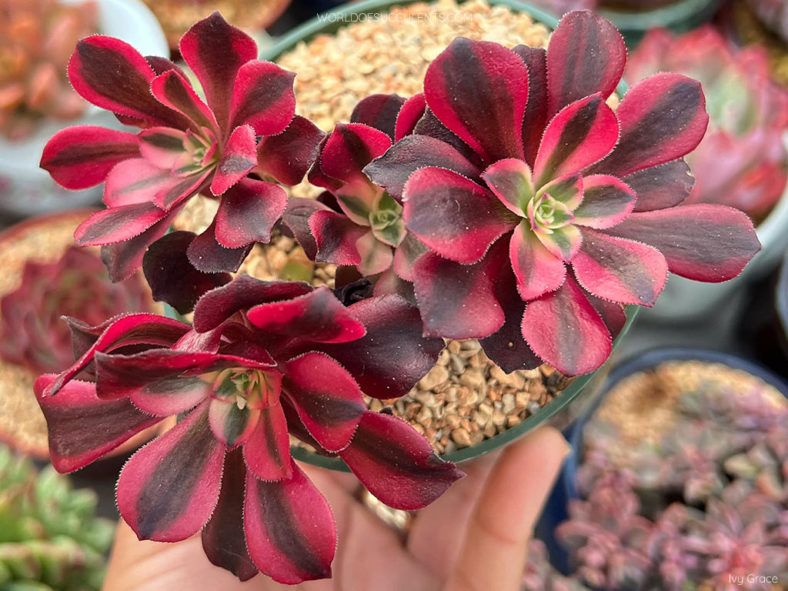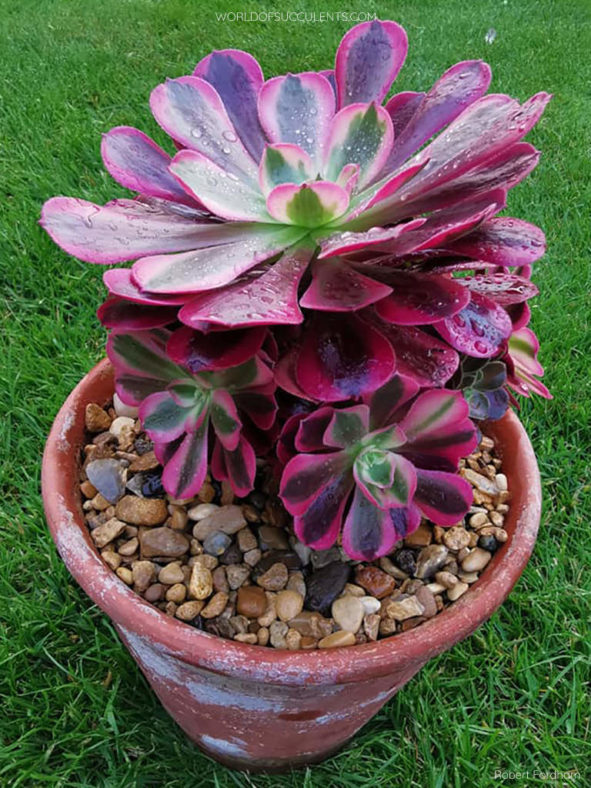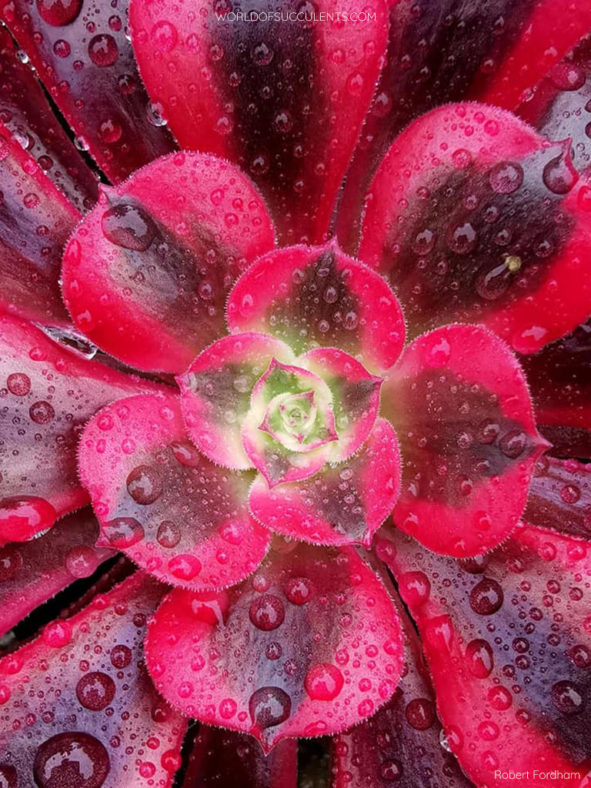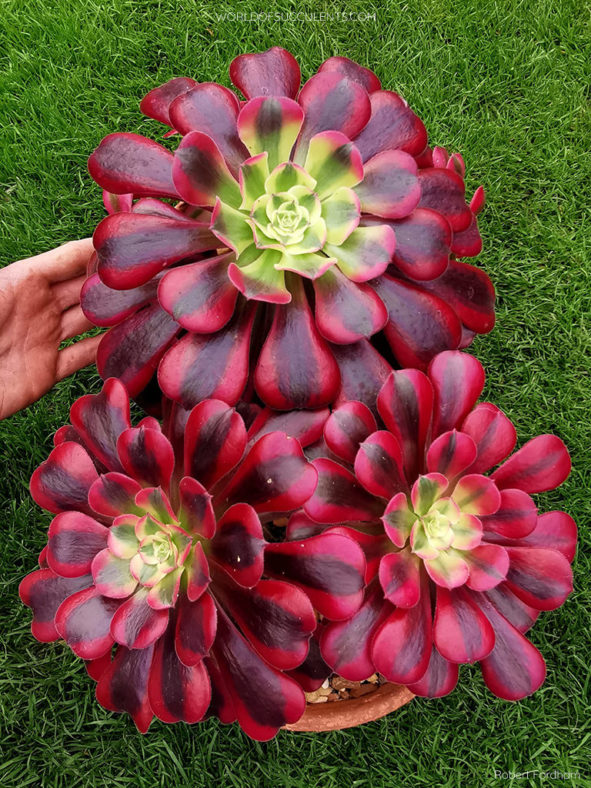Scientific Name
Aeonium 'Medusa'
Scientific Classification
Family: Crassulaceae
Subfamily: Sempervivoideae
Tribe: Aeonieae
Genus: Aeonium
Etymology
The hybrid name refers to Medusa, one of the three monstrous Gorgons in Greek mythology. Medusa is generally described as a winged human female with living venomous snakes in place of hair.
Origin
Aeonium 'Medusa' is supposed to be a sport of Aeonium 'Velour'.
Description
Aeonium 'Medusa' is a stunning succulent that forms offsetting rosettes of variegated, spoon-shaped leaves with soft, pointed tips and slightly ciliate margins. It can grow up to 18 inches (45 cm) tall and 16 inches (40 cm) wide and offsets freely at an early age, quickly forming an attractive clump. The colors of the leaves change depending on the season and the amount of sun exposure, from creamy with a green central band to intense red with a central band that is deep burgundy to almost black.
Flowering has not been observed to date.

How to Grow and Care for Aeonium 'Medusa'
Light: A. 'Medusa' grows best in full sun to partial shade. Indoors, provide it with as much bright indirect light as possible. A leggy, stretched plant is a sign that it is not getting enough light.
Soil: While most succulents thrive when planted in a potting mix specifically formulated for them, sandy loam or regular potting mix amended with perlite is better suited for A. 'Medusa' because it requires more moisture.
Temperature: This succulent does not like hot or dry weather and may go dormant in summer. It prefers temperatures between 65°F and 75°F (18°C and 24°C). A. 'Medusa' can withstand temperatures as low as 30°F (-1.1°C). USDA Plant Hardiness Zones 10a to 11b, 30°F to 50°F (-1.1°C to 10°C).
Watering: A. 'Medusa' requires more water than most succulents; however, excessive moisture can lead to root rot. In spring and fall, water the plant thoroughly, then allow the soil to dry out before watering again. Water more sparingly in winter. The plant does not require watering during its summer dormancy, except in arid conditions.
Fertilizing: Feed your plant with a half-strength balanced fertilizer once a month during the growing season. Do not feed A. 'Medusa' when it is dormant in summer.
Repotting: If you are growing A. 'Medusa' in a container, repot it every two to three years with fresh potting soil. Choose a container with drainage holes to avoid standing water and root rot.
Propagation: This succulent is easily propagated from cuttings. The best time to take cuttings is in the spring. Allow the cut end to dry for several days before placing it in the soil.
Learn more at How to Grow and Care for Aeonium.
Toxicity of Aeonium 'Medusa'
A. 'Medusa' is non-toxic to humans and animals.
Links
- Back to genus Aeonium
- Succupedia: Browse succulents by Scientific Name, Common Name, Genus, Family, USDA Hardiness Zone, Origin, or cacti by Genus
Photo Gallery
Click on a photo to see a larger version.


